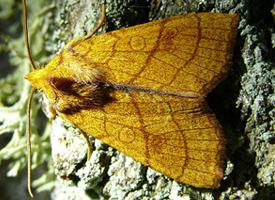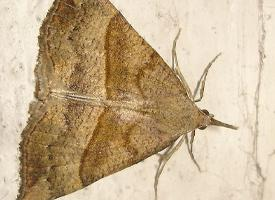
Greutăți și măsuri
| Lungimea anvergurii aripilor | de la 28 la 34 mm |
|---|
Descrierea animalului
The Orange Sallow, scientifically named Tiliacea citrago, is a captivating moth species belonging to the family Noctuidae, a large family known for its nocturnal habits and diverse species. This particular moth is distinguished by its unique coloration and affinity to certain habitats, making it a subject of interest among entomologists and nature enthusiasts alike.One of the most striking features of the Orange Sallow is its color palette, which primarily consists of warm, orange hues accented with shades of yellow and brown. The forewings exhibit a rich, orange base color, adorned with intricate patterns and subtle variations in shade. These patterns often include fine lines, spots, and sometimes a faint, dusky band that adds to the moth's distinct appearance. The hindwings are typically lighter, leaning towards a yellowish or creamy color, providing a beautiful contrast to the darker, more vibrant forewings.
The wingspan of the Orange Sallow ranges from approximately 30 to 38 millimeters, making it a medium-sized moth. Its body is robust and covered in fine scales that give it a soft appearance. The antennae of the Orange Sallow are filiform, which is characteristic of many moth species, and they play a crucial role in navigation and sensing the environment.
The Orange Sallow is predominantly nocturnal, like most moths. It is attracted to light, which makes it easier to observe and study. During the day, it tends to rest in sheltered locations such as under leaves or in crevices, camouflaging itself against predators and environmental elements.
This moth species is closely associated with the lime tree (Tilia species), from which it derives its name. The larvae feed on the leaves of these trees, making the presence of lime trees crucial for their survival. The adult moths, on the other hand, are known to feed on nectar from various flowers, contributing to their role in pollination.
The Orange Sallow is found in various parts of Europe and Asia, where lime trees are prevalent. Its habitat ranges from woodlands and forests to parks and gardens, wherever its host plants are available. The moth has a single generation per year, with adults typically emerging in late summer and early autumn. This timing allows them to take advantage of the flowering period of many plants, ensuring a food source for the adults.
In terms of conservation status, the Orange Sallow does not currently face any significant threats that would categorize it as endangered. However, like many species, it could be affected by habitat loss, pollution, and climate change. Conservation efforts aimed at preserving natural habitats and promoting biodiversity are essential for the continued survival of this and many other moth species.
In summary, the Orange Sallow (Tiliacea citrago) is a remarkable moth with a distinctive orange coloration, closely linked to lime trees and found in various habitats across Europe and Asia. Its nocturnal habits, diet, and lifecycle make it an interesting subject for study, while its presence enriches the biodiversity of its environment.
Animale similare
Fotografii noi cu animale
Top 10 animale
- Diana monkey (Cercopithecus diana)
- Dolphin gull (Leucophaeus scoresbii)
- Galápagos tortoise (Geochelone nigra complex)
- Moustached guenon (Cercopithecus cephus)
- Japanese spider crab (Macrocheira kaempferi)
- Colossal squid (Mesonychoteuthis hamiltoni)
- Fox tapeworm (Echinococcus multilocularis)
- Stone loach (Barbatula barbatula)
- Japanese macaque (Macaca fuscata)
- Barbary macaque (Macaca sylvanus)
